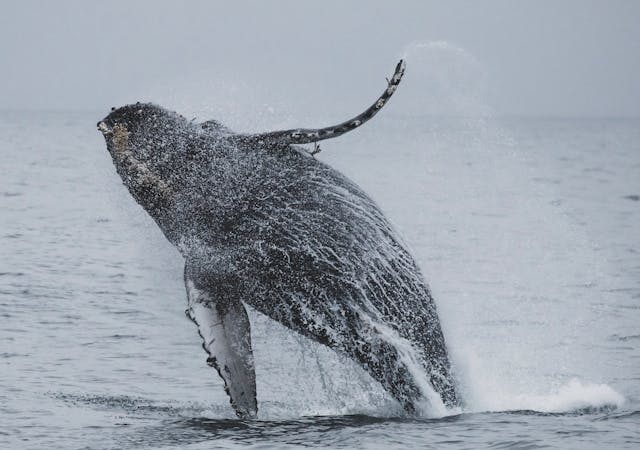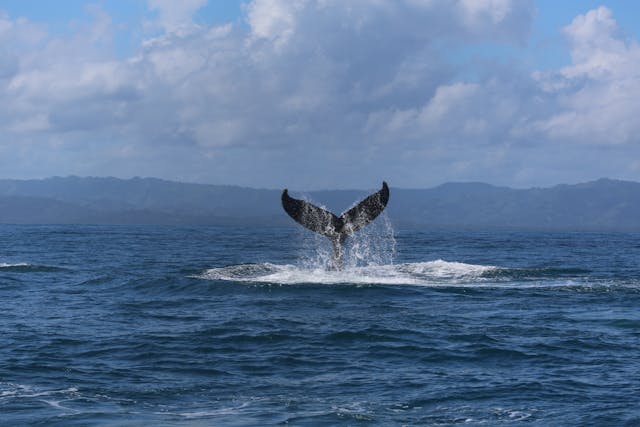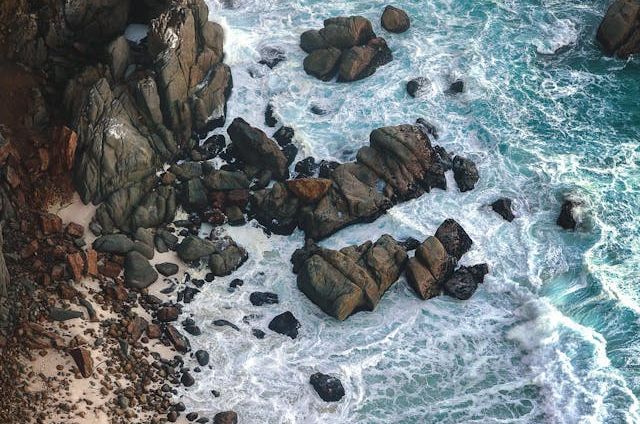Whale watching is an awe-inspiring activity that promises to give you unforgettable glimpses into the majestic world of marine life. Southern California, with its diverse coastline and rich marine ecosystems, offers one of the most prolific whale watching experiences in the world. If you’re a nature enthusiast, traveler, or local tourist looking to time your whale watching adventure perfectly, you’ve come to the right place.
In this comprehensive guide, we’ll explore the best time to observe these gentle giants off the coast of Southern California. We’ll also share tips on where to go, what to expect, and how to make the most of your encounter with these magnificent creatures. Whether you’re eager to witness the acrobatics of humpback whales or the sheer size of the blue whale, this guide will ensure that your visit coincides with the prime season for whale watching.
Risso’s Delight: A Calendar for Whale Watching
Winter and Early Spring: December to April
The whale watching ‘high season’ begins with the arrival of the Pacific gray whales from their summer feeding grounds in the Bering and Chukchi Seas to the warm calving lagoons of Mexico. This annual migration, often referred to as the ‘Greatest Journey on Earth’, typically happens from mid-December through to April. During this time, thousands of gray whales pass along the coast, creating ample opportunities for sightings.
Spring to Summer Transition: April to June
Spring marks a transition period for whale watching, with the gray whales starting their return to Alaska in mid-to-late April. It also heralds the arrival of other species, such as humpback and blue whales, drawn by the rich upwellings that bring abundant food to the surface. This is the time for ‘offshore’ species, and you might spot these giants as close as a few miles from shore.
Summer Peak for Blue Whales: July to September
The summer ushers in the largest animals on earth—the blue whales. Reaching the California coast in pursuit of a feast of krill, these behemoths offer a breathtaking spectacle. The generally calm waters and significant daylight in these months make it an ideal time for coastal excursions, and you’re almost guaranteed a blue whale sighting.
Fall Season for Various Species: October to November
Autumn witnesses a mix of species as the waters remain warm and the food supply abundant. This period is a prime whale-watching time, featuring diverse marine life. You may encounter not just the blue and humpback whales but also orcas, fin whales, and possibly coastal animals like the minke whale.
Navigation Tips: Where to Find the Whales
Whale watching is largely a coastal activity, and different regions along the Southern California coastline offer varying experiences.
The Channel Islands National Park
The Channel Islands provide some of the best opportunities for whale watching, especially for those who seek a truly wild and unspoiled environment. Charter boats operate out of various ports, such as Oxnard, Ventura, and Santa Barbara, offering day trips to the national park.
Dana Point and Newport Beach
These locations sit at the edge of a deepwater trench, making them hotspots for seeing various whale species. Dana Point, in particular, is known for its abundance of gray whales, while Newport Beach’s proximity to the trench brings it a wider mix of species.
San Diego and La Jolla Cove
San Diego boasts one of the busiest commercial harbors, and several companies offer tours from here. La Jolla Cove’s unique underwater geography brings in a plethora of marine life, often attracting whales relatively close to shore.
Santa Monica Bay and Palos Verdes Peninsula
This area offers some of the most accessible whale watching locations from Los Angeles. Santa Monica Bay hosts migrating gray whales, and the deep waters off the Palos Verdes Peninsula bring about sightings of other species.
Whale of Knowledge: What You May See

The primary stars of the show are the Pacific gray whales, which are spotted in abundance from December to mid-May. In their stead, humpback whales often take the stage, known for their breaching and pectoral fin displays. The largest of them all, the blue whale, is a common sight during the summer months, showcasing its fluking and lunge feeding techniques.
Among these giants, you might also glimpse playful porpoises, dolphin pods, and the powerful orcas. Plus, keep an eye out for different species of seals, sea lions, and a myriad of coastal birds, each contributing to the region’s vibrant wildlife.
Weather Watch: Best Conditions for Whale Watching
When it comes to experiencing the best whale watching in Southern California, good weather is essential. Clear skies and calm seas not only enhance visibility but also contribute to a more enjoyable and comfortable outing. For those looking to avoid the crowds, heading out midweek when weather permits can often yield quieter, more intimate whale watching experiences.
Preparations: Planning Your Whale Watching Adventure
Booking Your Tour
It’s highly recommended to book your tour in advance, especially during peak seasons. This ensures you get your preferred date and time, can make any required cancellations or changes without penalties, and might even save on costs with early bird deals.
What to Pack
Prepare for a day on the water with necessities such as sunscreen, a hat, sunglasses, and a light jacket. If you’re prone to seasickness, opt for appropriate medications or green-sea bands. Binoculars and a camera with a good zoom lens are indispensable for capturing those far-off splashes and spouts.
The Right Etiquette
Respect for the wildlife is paramount. Follow the guidelines on how to approach and observe whales and other marine life without causing distress. This often means maintaining a safe distance, minimizing noise, and never throwing anything overboard.
Environmental Awareness
Choose eco-friendly whale watching outfits that prioritize the well-being of the whales and their marine habitats. Keep all trash on board, especially single-use plastics that can be hazardous to marine life. Participate in any scientific sighting surveys if available—your observations could contribute to valuable research.
Explore the Wonder of Whale Migration in Southern California
The cyclical journey of whales along the Southern California coast is a testament to the richness and diversity of the Pacific Ocean’s ecosystems. These majestic creatures traverse thousands of miles in search of warmer breeding grounds or more abundant feeding areas, offering locals and visitors an unparalleled glimpse into the wonders of marine life. Understanding the patterns of whale migration not only enriches the experience for observers but also emphasizes the importance of conservation efforts to ensure the health and safety of these marine giants and their habitats for generations to come.
Humpback Whale Season in Southern California: December to May
Humpback whales, known for their majestic breaches and soulful songs, migrate to the warm waters of Southern California primarily from December through May. This period aligns with their breeding season, making the coastal waters off Southern California a hotspot for whale watchers hoping to catch a glimpse of these magnificent creatures. The humpback whales’ acrobatic displays, including breaching, tail slapping, and fin waving, are not just for show but part of their complex communication and mating rituals. Observers are often treated to these breathtaking performances, especially off the coasts of Santa Barbara and Monterey, where the whales are drawn by the rich feeding grounds. Ensuring a respectful distance, whale watchers can experience the awe-inspiring sight of humpback whales in their natural habitat, contributing to a memorable and educative outdoor adventure.
Fascinating Facts About Whale Watching in Southern California
- Southern California is one of the few places in the world where you can observe the incredible gray whale migration, a 10,000-mile round-trip journey from the Arctic to the warm lagoons of Mexico—one of the longest migrations of any mammal.
- The region’s unique underwater topography creates deep trenches close to shore, serving as marine highways for various whale species and making Southern California an ideal spot for land-based whale watching.
- Not just whales, Southern California’s coastal waters are teeming with diverse marine life, including dolphins, seals, sea lions, and numerous seabird species, making each whale watching trip a unique experience.
- Whale watching tours in Southern California often contribute to conservation efforts, with many operators collaborating with scientists and researchers to collect data that aid in the understanding and protection of marine mammals.
- The phenomenon of “whale falls,” where deceased whales sink to the ocean floor and create complex ecosystems, can sometimes be observed in regions like Santa Barbara Channel, offering a rare insight into the deep-sea life and the ecological impact of whales even after death.
Conclusion
Whale watching in Southern California is a life-affirming experience that connects us with the grandeur of the ocean and its inhabitants. By timing your visit to coincide with the peak seasons for whale migration and feeding, choosing the right locations, and observing best practices, you’ll be all set for an adventure that is enriching on both a personal and ecological level.
Remember, while sightings are almost guaranteed during the appropriate seasons, whale watching is also about patience and the thrill of the unexpected. Each trip is a unique opportunity to witness nature’s grand spectacle, and you’ll walk away with memories that will last a lifetime.
Start planning your whale watching adventure now, and get ready to set sail into the waters of discovery. Your rendezvous with these oceanic giants is but a swell away.


